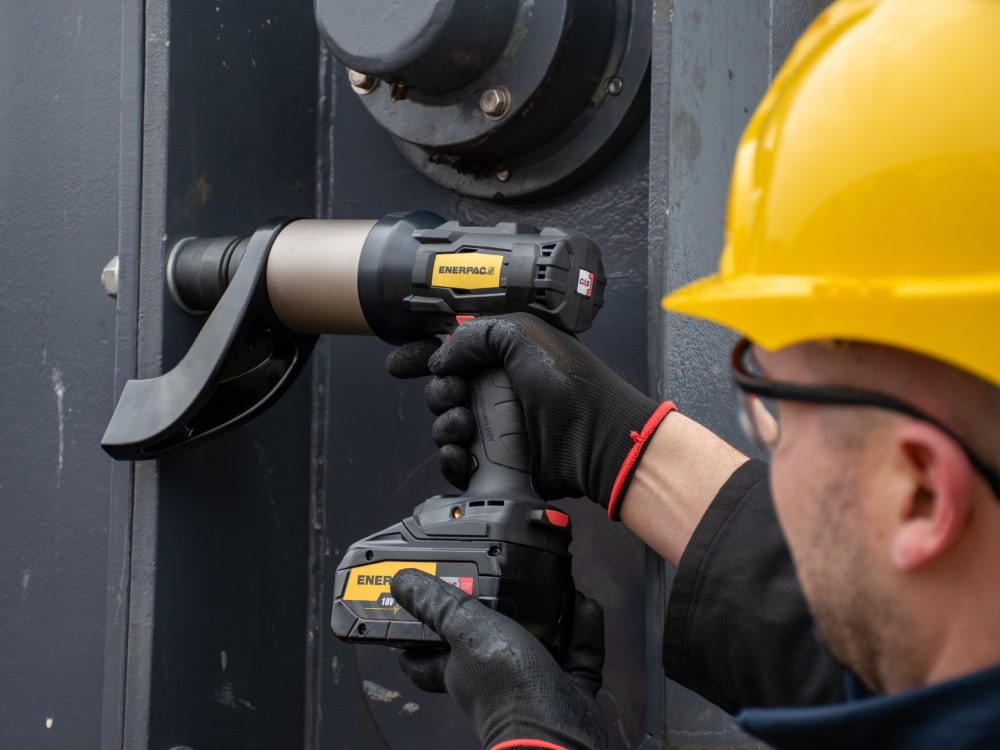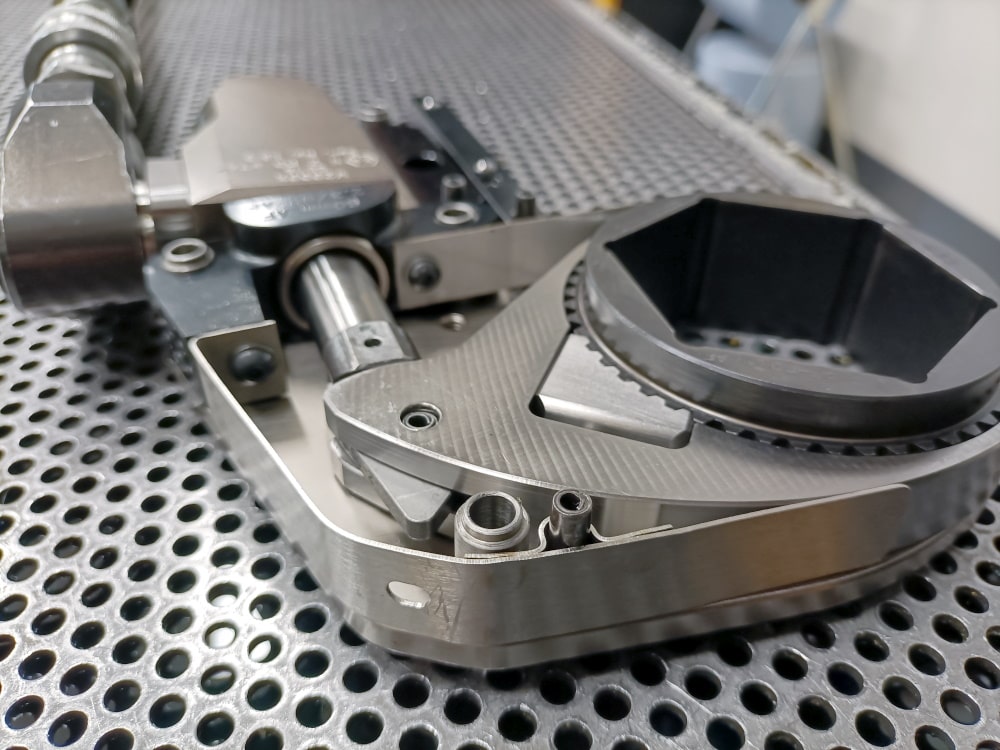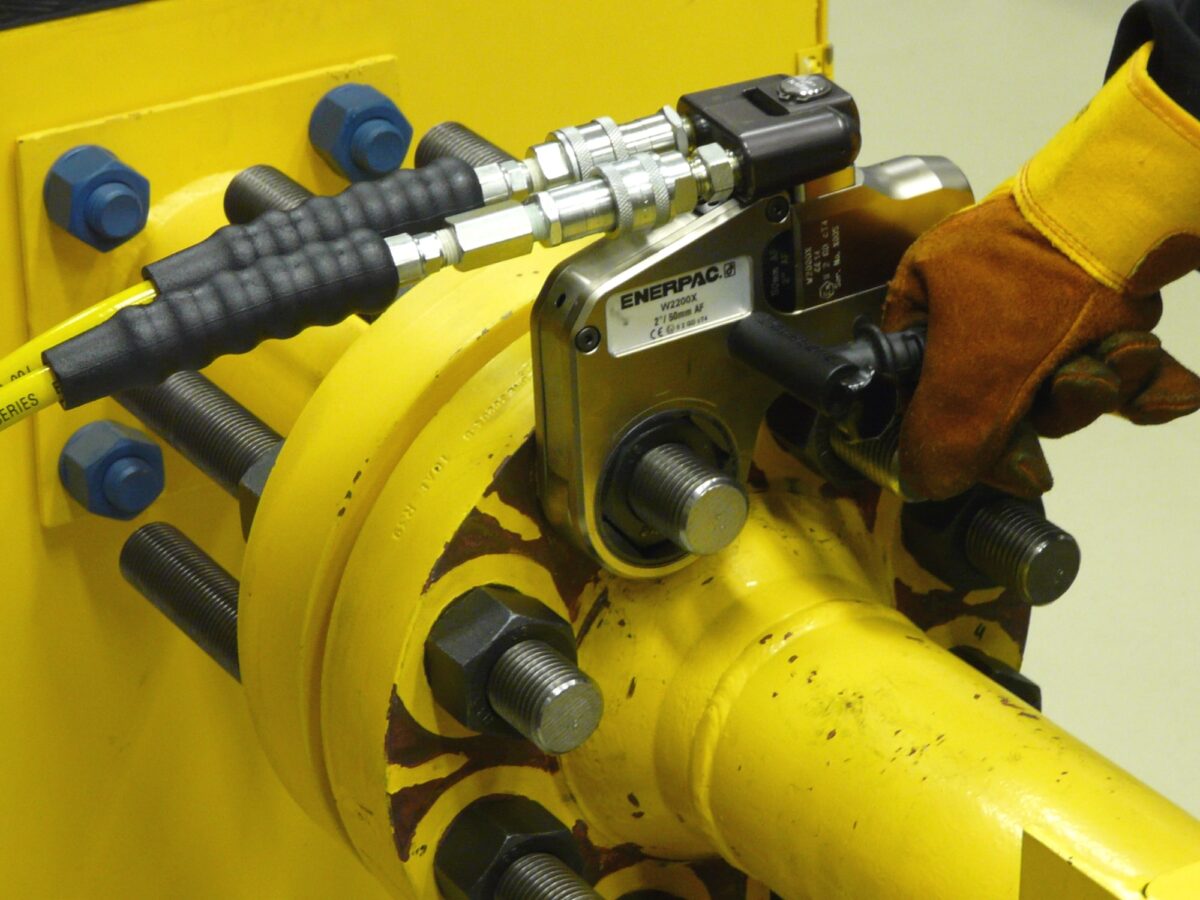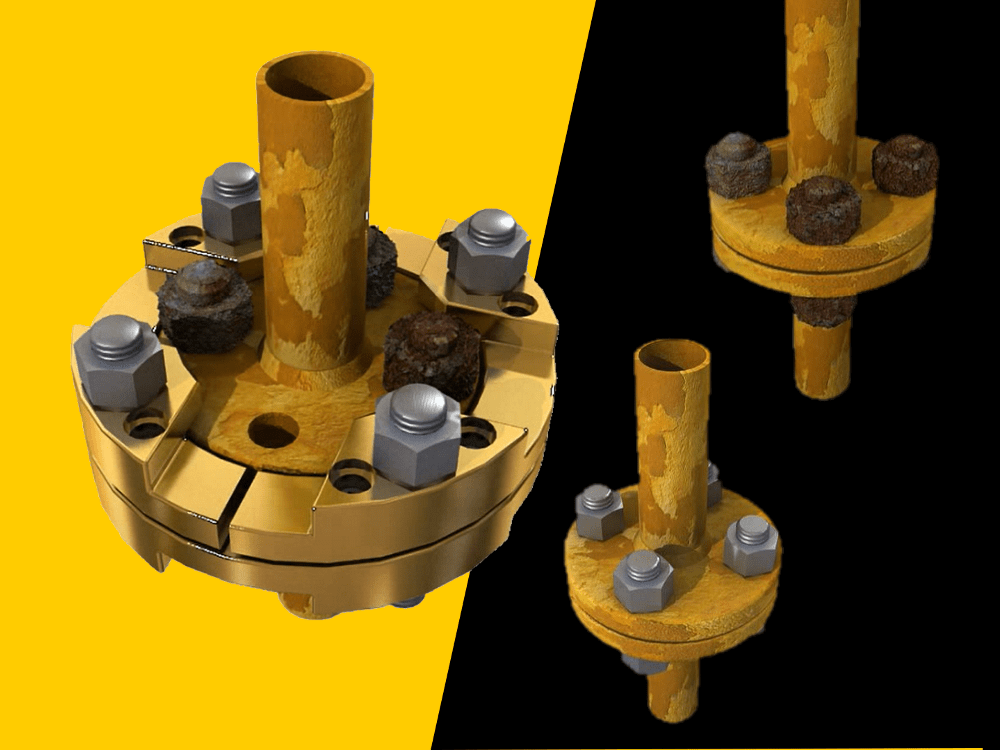Torque vs Tension: What’s the Difference?
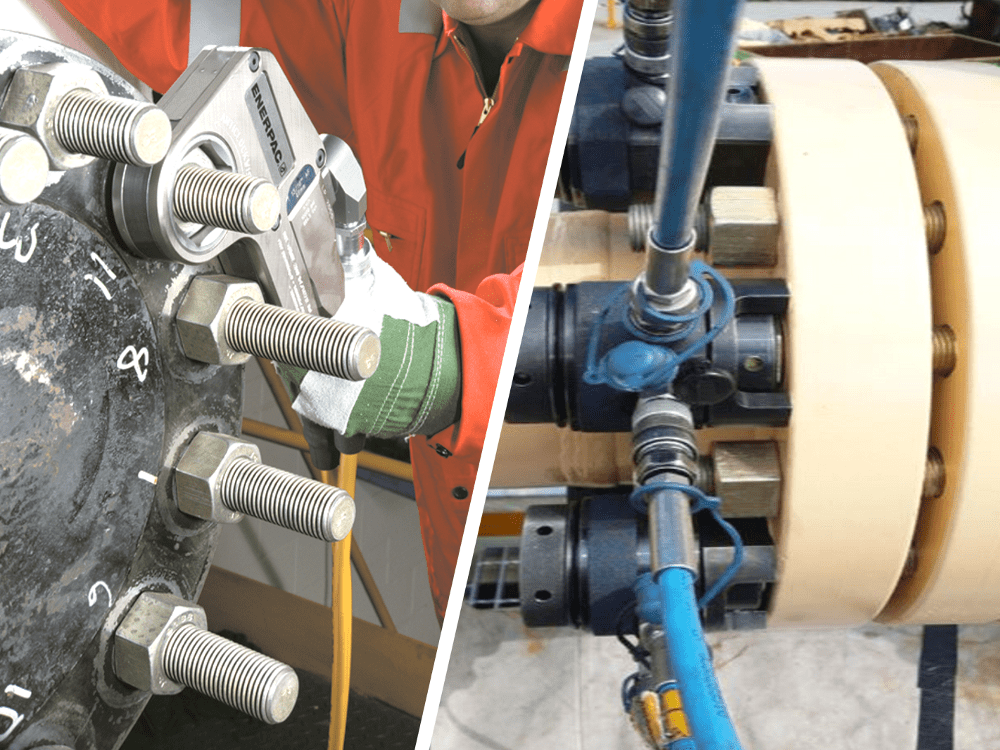
June 9, 2021
0
Before comparing torque vs tension, first, you should understand how a tightened bolt behaves.
Bolts that are correctly tightened make use of their elastic properties. To create a tight joint they must behave like springs.
When a load is applied by a torque wrench or tensioner, the bolt stretches and tries to return to its original length. The tension produced by the load leads to a clamping force, which works with the friction from the bolt’s threads to produce a secure joint.
The Difference Between Torque & Tension
Torque is the measurement of the force that causes something to rotate, for example, the turning force needed to spin a nut around the threads of a bolt.
Tension is the stretch or elongation of a bolt that provides the clamping force of a joint.
Bolt torquing and bolt tensioning are both widely accepted ways to seal a joint. Each has different advantages and disadvantages and suits different types of application.
Torquing and Hydraulic Torque Wrenches
A Torque wrench works by applying the principle of Newton’s law. This states that for every applied force there is an equal and opposite reactive force.

Above Right: How torque creates axial pre-load.
In practice, this means that as a nut is turned the bolt material stretches, creating a tension within the bolt that acts as a clamping force over the effective thread length. The clamping force pulls the two bolted components together and retains a tension (load) within the bolt.
Torquing and Friction
Friction plays a huge part in a torquing operation. An estimated 10-15% of the input torque actually stretches the bolt. The remaining 85-90% of input torque is used to overcome friction between the threads and under the nut or bolt head.
For the garage mechanic needing to change a car wheel or dismantle an engine, a manual hand-held torque wrench is usually enough to get the job done.
But more powerful tools are needed for industrial applications, such as on pipe flanges in the oil & gas industry. The higher torque output required, and the greater number of bolts make hydraulically powered torque wrenches a popular choice of tool for these applications.
A hydraulically powered torque wrench uses high-pressure hydraulic power supplied from an air, battery, or electric-driven pump. The higher the pressure, the greater the amount of torque applied to the bolt.
The unit of measure for torque is usually expressed in Ft.lbs or Nm.
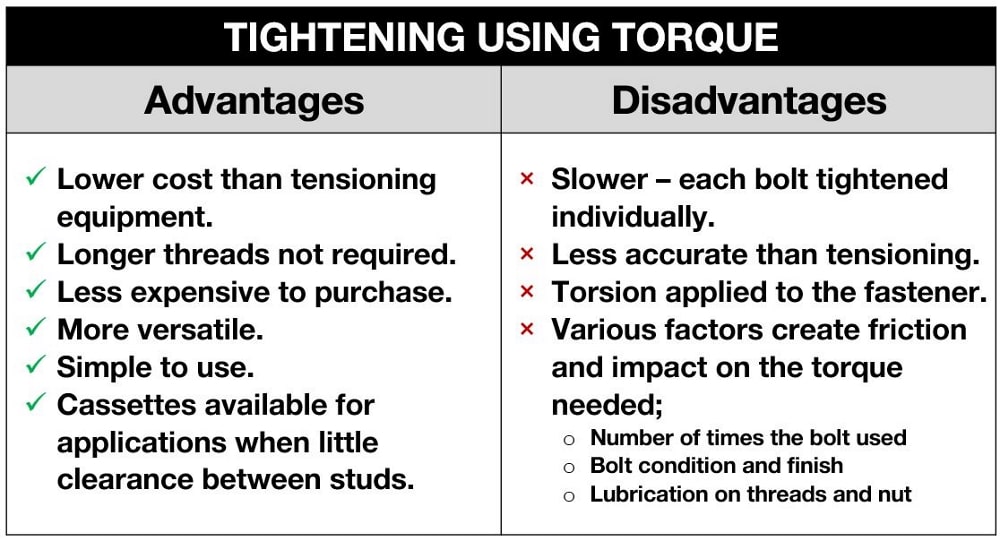
How Hydraulic Tensioning Works
Hydraulic tensioning started in the 1970s and has since become common in specific and critical applications in the oil & gas, subsea, wind and power industries. Typical applications include high-pressure flanges with large bolt diameters or critical joints.
A bolt tensioner works in a different way to a torque wrench. Instead of applying torque to rotate a nut which then creates bolt load, a tensioner grabs and pulls the threads protruding beyond a nut, stretching the bolt axially, lifting the nut from the surface, and therefore allowing the nut to be rotated back to the flange with a minimal amount of torque.
The unit of measure used for bolt load or tension is usually expressed in either pounds of force or Kn.
When the pressure to the tensioner is released, the elasticity in the bolt makes it want to return to its unstretched state, therefore creating a tension (aka a load, or clamping force) that keeps the joint together.
General Tensioning Procedure
Step 1: The bolt tensioner is fitted over the stud.
Step 2: Hydraulic pressure is applied to the tensioner which then stretches the stud.
Step 3: The stud’s nut is wound down against the joint face.
Step 4: Pressure is released, and the tool is removed.
Once they’re set up on the flange bolts, tensioners get the job done much faster than torque wrenches. This is because several (or all) tensioner cells can be tightened simultaneously. Also, ‘cross-talk’ or load sharing between neighboring bolts is minimized, which results in more uniform tension among bolts.
As tensioners are unaffected by frictional losses, they provide more accuracy than torque wrenches – making them especially suited to critical flange joints, such as those in the nuclear power sector. Operating pressures of tensioners are typically higher than with hydraulic torque wrenches and can range from 10,000 (690 bar) up to 22,000 psi (1379 bar).
If you want to buy tensioning equipment you will need a much bigger budget than you would if buying torque wrenches. There’s also many extra considerations to take into account to make sure the tensioning cells fit correctly. These include bolt diameter, washer thickness, washer diameter, bolt grade, load requirement, length of free stud protrusion. (More stud protrusion is needed than torquing).
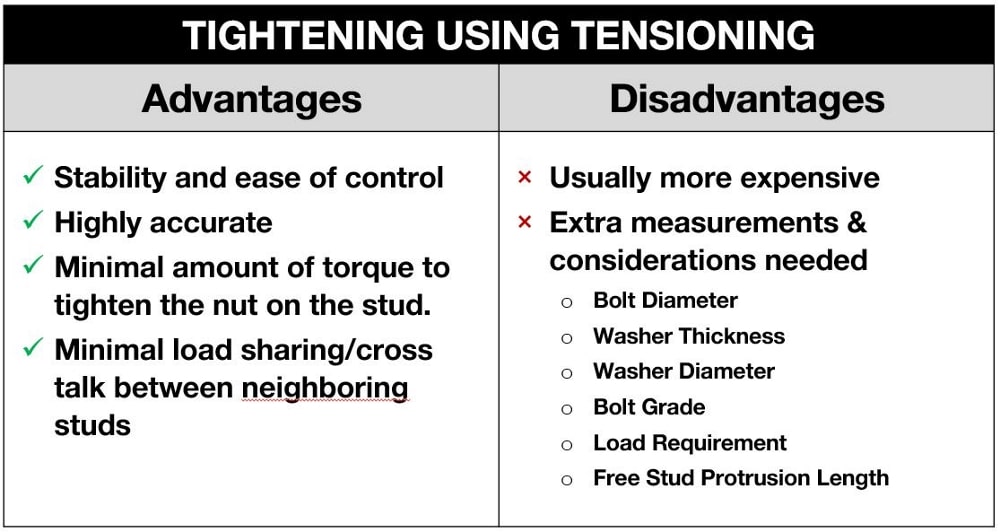
Torque vs Tension: Which is Best?
The answer to the torque vs tension question depends upon a number of things;
How critical are the joints?
How accessible are the joint components?
What equipment is available?
How many joints are to be worked on?
Budget Available
What are the skills of the people doing the job?
Torquing is flexible, versatile, and less expensive. However, it would be wrong to make your decision on budget alone. Dealing with an issue on a critical flange joint in the future could incur significant costs.
Tensioners offer more accuracy. They’re faster, they often require a larger investment, and are more complex. Also, bear in mind that if the clearance between studs is tight some joints may need to be tensioned in stages – (instead of the preferred scenario where all bolts can be tightened simultaneously). When this is the case then a suitable bolting pattern should be followed.
